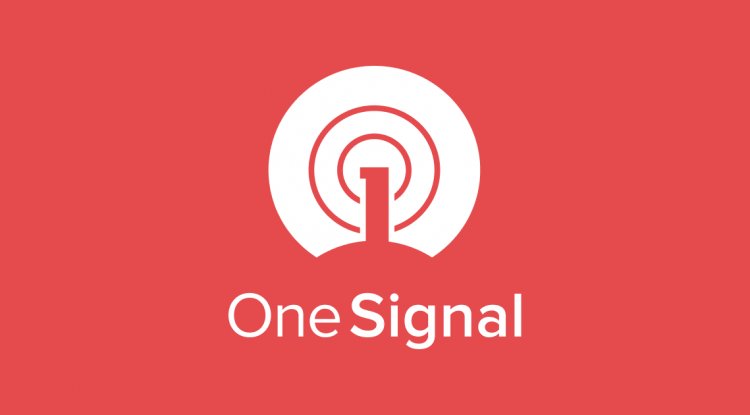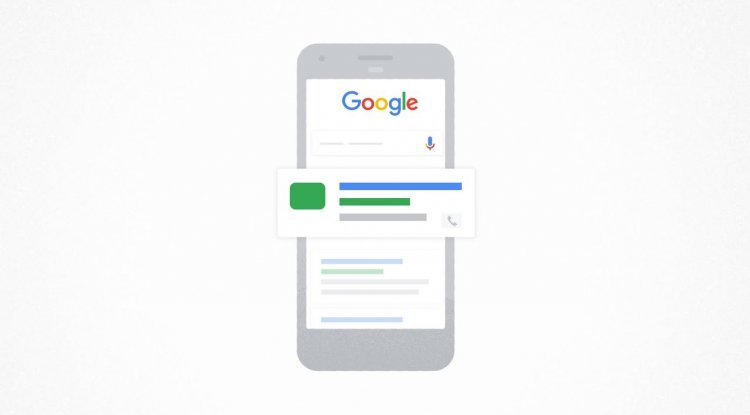11 Best Free (& Private) Email Accounts & Service Providers of 2023
You need an email account — whether it’s for networking, job recruitment, downloading resources, transferring files, setting reminders, meeting with colleagues, or something else.

You need an email account — whether it’s for networking, job recruitment, downloading resources, transferring files, setting reminders, meeting with colleagues, or something else.

Even with the rise of office chat platforms, you still depend on email for a surprising number of things. But unfortunately, not every email service is completely free. And even the free ones might not be the easiest to use or have all the features you need.
It can be a challenge to find an email service provider at no cost that balances the right features with usability. To help make your search easier, we put together a list of the different types of email accounts you can set up, followed by the best email service providers you can host your account on right now for free.
Types of Email Accounts
There are two main types of email service providers to choose from: Email clients and webmail.
Let's briefly go over these different types of providers.
What are email clients?
Email clients are software applications you install onto your computer to manage the email you send and receive. To access this email, the client interacts with a remote email server.
Email clients you've likely heard of include Microsoft Outlook, Mozilla Thunderbird, and Apple Mail.
What is a webmail?
Webmail is a form of email you access exclusively from the internet and therefore exists primarily on the cloud rather than your computer. Instead of an installed application fetching your email, you manage your inbox right from your internet browser.
Examples of webmail providers include Gmail, Yahoo! Mail, and Hotmail.
Now, take a look at the best free email service providers (and the best email accounts for privacy) you can get your hands on today — both webmail and email clients included. For each email service provider, we've highlighted a unique feature to help you find the best fit.
1. Gmail: Best for Offline Accessibility
%20Email%20Accounts%20and%20Service%20Providers%20of%202021-4.png?width=650&name=The%2012%20Best%20Free%20(and%20Private)%20Email%20Accounts%20and%20Service%20Providers%20of%202021-4.png)
Unique Feature: Native File Collaboration
Sign up here.
Type of email: Webmail
Who should use it: Anyone who already uses and loves the rest of Google's products.
It might seem like an obvious top pick, but Gmail is just too versatile not to get our first slot. According to Litmus Labs, Gmail has the second-highest email provider market share (behind Apple iPhone's native email app).
Ironically, one of the reasons Gmail has become so popular is because of all the communication options in your inbox that don't involve email.
Gmail is a regular email inbox tool you can access once you have a Google account. Since it’s built into Google Workspace (formerly G Suite), you can also access a group of free apps that allow you to chat, video conference, and share files with the people in your contact list.
Google Hangouts, available from your inbox's left sidebar (or the right — you can customize how your inbox is displayed), lets you text and video chat with other Gmail users for the things that might not warrant an email message.
Like most other email accounts today, Gmail also has an intuitive calendar where you can set meetings and reminders.
Pro Tip: You can also use a free product like HubSpot Meetings to easily schedule meetings without back-and-forth emails.
Unlike other email accounts, you can use your Gmail address to log into and manage your YouTube account, as well as collaborate on shared documents and spreadsheets right from a cloud-based Google Drive.
Offering a generous 15 GB of free email storage, Gmail does everything it can to make your inbox less chaotic, including providing advanced filters that automatically push emails into separate folders as they arrive. And none of these functions costs a dime.
Notable Features:
- Allows you to un-send emails. Within seconds of sending an email you didn’t mean to send, a handy “Undo” button will pop up in the bottom-right hand corner of your screen.
- 15GB free email storage. You can store thousands upon thousands of emails without worrying that you’ll soon reach an upper limit.
- Accessible from any internet-connected device. And on any browser, too. Whereas email clients vary in terms of compatibility with operating systems and devices, Gmail is available on whatever device you have on hand.
- 99.9% protection from suspicious/spam emails. Some might argue that Gmail’s spam filter is oversensitive — I myself have had perfectly legitimate emails routed to my spam folder!
- Texts suggestions that help you write emails faster. Gmail’s Smart Compose feature uses machine learning technology to predict what you’re writing with high accuracy. Whether you use the suggestions is up to you, of course.
2. AOL: Best for Interface Organization
%20Email%20Accounts%20and%20Service%20Providers%20of%202021-Dec-23-2021-01-03-57-92-AM.png?width=650&name=The%2012%20Best%20Free%20(and%20Private)%20Email%20Accounts%20and%20Service%20Providers%20of%202021-Dec-23-2021-01-03-57-92-AM.png)
Unique Feature: Unlimited Storage
Sign up here.
Type of email: Webmail
Who should use it: Anyone who uses email for most of their communication.
America Online (I feel nostalgic just typing those words) has quietly kept up with today's standards for a good user experience and is now once again one of the best free email accounts available to you.
Purchased by Verizon in 2015, AOL delivers your email from its classic news-driven homepage and comes with the contemporary spam filters and virus protection you'd expect from your email provider. You can also send text and instant messages from specific windows in your email inbox.
AOL does have something over Gmail, though: unlimited storage. Additionally, you can import email contacts from a CSV, TXT, or LDIF file, so you're not creating your "buddy list" (get it?) from scratch.
Notable Features:
- Unlimited storage. This major perk ensures you never have to create another email account, ever, due to storage limits. What a win — especially if you sell and receive numerous emails per day!
- Ability to import contacts in any format. If you’ve kept your list of contacts in a file on your laptop or phone, you can easily import it into AOL with the click of a button.
- Offers a spellchecker to reduce errors. There’s no need to install a separate spellchecker — AOL provides one within its composer.
- Protection from suspicious/spam emails. No one wants to sift through emails from dubious senders. AOL will filter them for you.
- Accessible from any internet-connected device. And on any browser, too. Whereas email clients vary in terms of compatibility with operating systems and devices, AOL is available on whatever device you have on hand.
3. Outlook: Best for Multiple App Integrations
Unique Feature: Multiple App Integrations
Sign up here.
Type of email: Email client
Who should use it: Anyone who uses many different platforms to connect with others.
If you ever cringed at the sight of a "Hotmail.com" email address, you can thank Outlook for this outdated domain name.
But there's good news: Microsoft has reinvented its longstanding email service, and your free Outlook.com email address has many advanced features waiting for you.
While it touts a calendar and message filter similar to Gmail, Outlook also integrates with several other popular communication apps.
For example, you can connect Skype, Facebook, PowerPoint, PayPal, and even task management software such as Trello — making it very easy to reach and work with non-Outlook users without leaving your inbox.
Outlook offers 15 GB of free storage for each user, along with a super-clean interface.
Notable Features:
- 15GB free email storage. You can store thousands upon thousands of emails without worrying that you’ll soon reach an upper limit.
- Like with Microsoft Excel or Word, you can use Add-ins with Outlook. This is an excellent benefit for avid Microsoft product users who know which apps they need to connect with their email.
- Easy access to other Microsoft apps like Skype. Outlook seamlessly links with other tools in the Microsoft suite of products.
- Provides aliases that add anonymity to your email. Whether you’re sending emails for work or personal matters, an alias can be helpful for protecting your identity and your inbox from malicious spam.
- Excellent email organization. Easily find whatever you need with Outlook’s sidebar, which provides advanced organizations folders to group your most important emails.
4. Yahoo! Mail: Best for Lots of Storage
%20Email%20Accounts%20and%20Service%20Providers%20of%202021-Dec-23-2021-01-03-56-77-AM.png?width=650&name=The%2012%20Best%20Free%20(and%20Private)%20Email%20Accounts%20and%20Service%20Providers%20of%202021-Dec-23-2021-01-03-56-77-AM.png)
Unique Feature: Media and Attachment History
Sign up here.
Type of email: Webmail
Who should use it: Creatives and anyone who sends and receives attachments frequently via email.
Yahoo! Mail, another well-known platform, sits just behind AOL in storage space with a whopping 1 TB (that's a terabyte) for free, along with a few key social media integrations.
You can have custom background themes and search for key information from your inbox with Yahoo! Mail.
Yahoo! Mail makes it easy to find every photo, video, and document you've ever attached or received via email in their tabs on your inbox's sidebar. This makes the platform especially appealing to those who share documents regularly or simply want an album made of every photo they've ever had shared.
Notable Features:
- 1TB free email storage. Wow! Talk about a mammoth level of storage. You can store thousands upon thousands of emails without worrying that you’ll soon reach an upper limit.
- Connects seamlessly with Yahoo Calendar. If you’re a current Yahoo Calendar user, you’ll be pleased to know that Yahoo Mail syncs with your events (and allows you to create new ones from your inbox).
- Accessible from any internet-connected device. And on any browser, too. Whereas email clients vary in terms of compatibility with operating systems and devices, Yahoo Mail is available on whatever device you have on hand.
- Outstanding media and document organization. If you send and receive many emails with media attachments, Yahoo Mail is an excellent choice due to its advanced sorting and organization features for attached files.
- Instant notifications for new emails. Never miss a message with Yahoo Mail’s instant notification feature.
5. iCloud Mail: Best for Data Encryption
%20Email%20Accounts%20and%20Service%20Providers%20of%202021-1.png?width=650&name=The%2012%20Best%20Free%20(and%20Private)%20Email%20Accounts%20and%20Service%20Providers%20of%202021-1.png)
Unique Feature: Labels Senders as VIPs
Sign up here.
Type of email: Webmail
Who should use it: People who use Mac and want everything on one system.
If you’re a Mac user, you may want to consider using iCloud Mail as your email provider. Their free email account comes with 5GB of storage that you can use to sync your photos, files, or email.
However, it’s important to note that storage is shared between all of your apps and devices — so if you take a lot of photos on your iPhone, you may eat into your email storage allowance for the month. Upgraded plans start at $0.99/month and go up to $9.99/month.
One of the most significant advantages of using iCloud over other email providers on this list is the ease of integration. Apple builds its desktop and iPhone mail apps with all email clients in mind, but it pays special attention to making the experience delightful for iCloud users.
Notable Features:
- Compatible with Apple products and services. If you’re an Apple user, iCloud Mail is an excellent choice that gives you seamless syncing across all of your devices.
- 5GB free email storage. Though lower than other providers, 5GB is plenty of storage for the casual email user.
- Search functionality. Easily find anything and everything you need with iCloud Mail’s powerful search feature.
- VIP flagging. iCloud Mail gives you the ability to label senders as VIP to automatically filter important messages and save time.
- One-click “Unsubscribe” feature. Have you ever had to scroll and scroll to find the unsubscribe button on an unwanted email? iCloud Mail includes a one-click feature to help you save time.
6. Mozilla Thunderbird: Best for Managing Multiple Accounts
%20Email%20Accounts%20and%20Service%20Providers%20of%202021-Dec-23-2021-01-03-57-55-AM.png?width=650&name=The%2012%20Best%20Free%20(and%20Private)%20Email%20Accounts%20and%20Service%20Providers%20of%202021-Dec-23-2021-01-03-57-55-AM.png)
Unique Feature: Ability to Open Multiple Emails in Tabs
Sign up here.
Type of email: Email client
Who should use it: Anyone looking for a simple but customizable email inbox.
Thunderbird, a free email application from Mozilla (known primarily for Firefox), offers a quick email inbox setup and a simple, easy-to-use user interface.
The app offers customizable features, such as theme settings and app extensions to improve your email experience. The email app also allows you to open multiple emails in tabs, similar to how you would open various web pages in Firefox browsers.
Notable Features:
- Large extension library. Easily customize your Thunderbird experience with a wide range of apps and services.
- Google Calendar integration. Thunderbird integrates with Google Calendar to make task management and meeting scheduling easier.
- Smart email organization. Thunderbird reduces clutter by giving you numerous folders and sorting options for all of your messages.
- Browser-like tabs. Have you ever found email difficult to manage because you can only see one message at a time? Thunderbird solves this issue by giving you the ability to open messages in different tabs, like in a web browser.
7. Zoho
%20Email%20Accounts%20and%20Service%20Providers%20of%202021-Dec-23-2021-01-03-58-80-AM.png?width=650&name=The%2012%20Best%20Free%20(and%20Private)%20Email%20Accounts%20and%20Service%20Providers%20of%202021-Dec-23-2021-01-03-58-80-AM.png)
Unique Feature: 25 Business Addresses
Sign up here.
Type of email: Webmail
Who should use it: Startups and small businesses.
This is the first of the free email accounts for privacy to make our list, but it holds a ton of potential for businesses.
The first thing you'll notice about Zoho is its user-friendliness. From integrating with Google Drive, Box, and other cloud-based file managers, to its built-in task manager, this email service offers a simple way to accomplish all of your daily tasks.
The real difference-maker, though, is the ability to customize the domain name for up to 25 connected email addresses. Want to replace "@zoho.com" with the name of your business's website? You can do so under Zoho Lite, which gives you 5 GB for free — all under username@yourdomainname.com.
Notable Features:
- Privacy from advertisers. Zoho doesn’t scan your inbox for advertisement purposes, so your information won’t be sold to third-party buyers.
- Emails are in an encrypted format. This is specially important if you regularly send and receive sensitive information.
- Customizable domain name. Zoho gives you the ability to customize the domain name of your email, a useful perk for small businesses.
- Integrates easily with Zoho CRM. If you already use Zoho CRM, Zoho is an excellent and natural choice that offers business email essentials for free or at a low price.
8. Proton Mail
%20Email%20Accounts%20and%20Service%20Providers%20of%202021-2.png?width=650&name=The%2012%20Best%20Free%20(and%20Private)%20Email%20Accounts%20and%20Service%20Providers%20of%202021-2.png)
Unique Feature: Encrypted Email
Sign up here.
Type of email: Webmail
Who should use it: Anyone who sends and receives sensitive information.
Proton Mail offers just 500 MB of free space, but for the worthy trade of encrypted email, allowing you to send messages that nobody else can see and disappear after a month.
What's the catch? Is the service hard to use? Proton Mail is easy to use on any device without any software needed to encrypt your emails, as with most webmail platforms. Its inbox interface is as easy to understand at a glance as the other email services on this list.
And the tool offers quick color-coded labels to help you further organize which emails deserve the most care and protection.
Notable Features:
- 100% privacy. No personal information is required to open an account, making it useful for situations where you need to email someone anonymously.
- Compatible with external email clients. Whether you use Apple Mail, Outlook, or Thunderbird, Proton Mail seamlessly integrates for off-browser email management.
- Optimized inbox to boost productivity. Easily sort your inbox and group messages into folders with Proton Mail’s organization features.
- End-to-end data encryption. No third-party provider gets access to your email, ever, making this one of the most private options on the market.
9. GMX Mail
%20Email%20Accounts%20and%20Service%20Providers%20of%202021.png?width=500&name=The%2012%20Best%20Free%20(and%20Private)%20Email%20Accounts%20and%20Service%20Providers%20of%202021.png)
Unique Feature: Alias Email Addresses
Sign up here.
Type of email: Webmail
Who should use it: Anyone who needs multiple emails with one central inbox.
While you may not have heard of GMX Mail, it’s been around for quite a while (since 1997) — and it has a bunch of features that make it worth considering.
First off, GMX offers 65 GB of storage. That’s a lot of storage for a free email service. In fact, they claim that it allows you to keep nearly half a million messages in your inbox!
Another feature worth noting is the ability to send large attachments. While many services have low caps for your email attachments, GMX Mail allows you to send files up to 50MB. That’s great if you share a ton of photos, presentations, or other large files from your account.
But the feature of GMX Mail that really sets it apart is the ability to set up to 10 alias email addresses, all from within one account. This can be useful in many situations — both personally and professionally.
For instance, you could use one alias for all of your online purchases and logins — to keep marketing emails separate from your private messages. From a business perspective, multiple email addresses can help manage role-based emails such as support@yourdomain.com or sales@yourdomain.com.
Notable Features:
- Protection from suspicious/spam emails. GMX offers a strong spam filter to protect your inbox from suspicious messages.
- 65GB free email storage. You can store thousands upon thousands of emails without worrying that you’ll soon reach an upper limit.
- Easy-to-use email filter templates. Have you ever found creating email filters a hassle? GMX offers premade filters for you to use.
- External email account integration. GMX allows you to use a mail collector for keeping and managing all your emails (even from other service providers) in a single place.
10. Trustifi
%20Email%20Accounts%20and%20Service%20Providers%20of%202021-Dec-23-2021-01-03-57-11-AM.png?width=650&name=The%2012%20Best%20Free%20(and%20Private)%20Email%20Accounts%20and%20Service%20Providers%20of%202021-Dec-23-2021-01-03-57-11-AM.png)
Unique Feature: Data Loss Prevention
Sign up here.
Type of email: Webmail
Who should use it: Anyone who doesn’t want to choose between having a secure and functional inbox.
Trustifi combines the best of a productive and secure email provider in one place.
With available whitelisting and blacklisting options, you can easily choose whom you allow to send you messages. Trustifi is also compliant with HIPAA/HITECH, PII, GDPR, FSA, FINRA, LGPD, CCPA, and more, so you don’t have to worry about losing your account overnight.
You can even use the Trustifi add-on to add an extra security layer to your Gmail or Outlook inbox.
Notable Features:
- Ransomware and fraud detection. With Trustifi’s fraud detection feature, you can trust that the emails you receive are from legitimate senders.
- Ability to set expiry dates on sent emails. This is a highly helpful feature for businesses that regularly send time-bound contracts and documents.
- External email account integration. Trustifi seamlessly integrates with other email systems or service providers, making it easy to manage all your emails in one place.
- End-to-end data encryption. No third-party provider gets access to your email, ever, making this one of the most private options on the market.
11. Mailfence
%20Email%20Accounts%20and%20Service%20Providers%20of%202021-3.png?width=650&name=The%2012%20Best%20Free%20(and%20Private)%20Email%20Accounts%20and%20Service%20Providers%20of%202021-3.png)
Unique Feature: Legal Protection
Sign up here.
Type of email: Webmail
Who should use it: Anyone looking for a secure email account that integrates with other tools.
Mailfence is a secure browser-based email service provider based in Belgium. Given the strict privacy laws in Belgium, all your data is locked away from any third-party access.
Their free plan gives you 500 MB of email space. But to truly enjoy the best of Mailfence, you’ll have to hop on a paid plan that starts at €2.50/month.
You’d be able to create up to 10 aliases on the paid plan and have 5GB of email space, among many other features.
With Mailfence, it’s easy to organize your day and business because you’d be able to easily integrate your email account with your contacts, calendar, and documents.
Notable Features:
- 500MB free email storage. Though lower than other providers, 500MB is sufficient storage for the casual email user.
- Legal protection. Because of strict Belgian privacy laws, Mailfence offers an unparalleled level of legal protection.
- End-to-end data encryption. With Mailfence’s True OpenPGP end-to-end encryption, no third-party provider gets access to your email, ever, making this one of the most private options on the market.
How to Make an Email Account
No matter which provider you choose, creating an email is a simple process. But, it’s still important to know best practices so you can have one that fits your needs the best. The purpose of an email is to provide a space for you to have easy, secure communications. Follow the steps below to create an email:
1. Choose An Email Provider
Select an email provider based on your needs as a user. Think about which features, such as top-tier security, email scheduling capabilities, or integrations, are the most important to you. Also, consider how much storage you will need and what type of provider works best.
2. Choose a Username
Select a username based on the purpose of the account. If it is a professional account, then your name with a significant number will do. The name of your business will do if it’s a business account. You might also consider your name@businessname.com for professional accounts.
3. Create a Password
Email providers generally have minimum requirements for how secure your password must be. These often include a number or a special character. Follow these guidelines and choose a password that is very unique and has a variety of letters, numbers, and characters to make it very secure.
4. Secure Your Account
Many email providers include ways to add extra security to your account. Take advantage of these features to keep your account and data safe. Setting up two-factor authentication is a great place to start.
5. Write a Signature
Set up an email signature for your account. This saves a lot of time as you are writing emails and helps keep your closing consistent. Include information like your name, your title, and your contact information.
Making the Most of Your Email
And with that, you have some of the best options for free email accounts this year. But who knows? Your next email address could be entirely different while giving you just what you need to succeed.
Editor's note: This post was originally published in March 2018 and has been updated for comprehensiveness.
What's Your Reaction?







%20Email%20Accounts%20and%20Service%20Providers%20of%202021-Dec-23-2021-01-03-58-45-AM.png?width=650&name=The%2012%20Best%20Free%20(and%20Private)%20Email%20Accounts%20and%20Service%20Providers%20of%202021-Dec-23-2021-01-03-58-45-AM.png)













